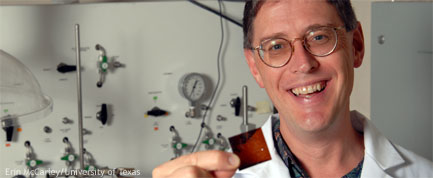
A plastic tweaked to mimic cellular membranes can separate carbon dioxide from natural gas and could help reduce greenhouse gases in the atmosphere, scientists say.
The technology, detailed in the Oct. 12 issue of the journal Science, might also be modified to isolate natural gas from decomposing garbage or filter impurities from water, the researchers say.
Like a selective sponge, the new plastic allows carbon dioxide or other small molecules to pass through its hourglass-shaped pores but blocks the passage of methane, the primary molecule in natural gas.
The shape of the cavities are similar to ion channels on cell surfaces that allow molecules of only a certain size and charge to pass to the interior.
The researchers say their new plastic is four times more effective and 100 times faster at filtering carbon dioxide than conventional membranes.
To prevent gas-pipe corrosion, the natural gas transported in pipelines can only contain 2 percent carbon dioxide. However, it often comes out of the ground containing higher levels of the gas and requires an extra separation step to strip out the excess.
Carbon dioxide is implicated in human-caused global warming, so in addition to production benefits, the new plastic could be used to help reduce levels of the greenhouse gas in the atmosphere.
Sign up for the Live Science daily newsletter now
Get the world’s most fascinating discoveries delivered straight to your inbox.
The researchers call their invention TR plastic, short for "thermally rearranged" plastic, because it was created using an innovative heat treatment that allows for more precise control over the pore sizes.
With conventional plastic membranes, it is hard to control the size and shape of the pores. "You get a much broader range of sizes, so you get some that are very narrow and have very high selectivity, but you also get a lot that are large so they separate poorly," said study team member Benny Freeman of the University of Texas in Austin.
The TR plastic could handle temperatures above 600 degrees Fahrenheit (316 degrees Celsius) and actually performed better at high temperatures. The high heat tolerance makes it ideal for use in power plants where high temperatures are required to separate greenhouse gases from natural gases.
Because it is so much more permeable than existing plastic membranes, the TR plastic could allow processing plants to get by with 500 percent less space, the researchers say.
"This membrane has enormous potential to transform natural gas processing plants, including offshore platforms, which are especially crunched for space," Freeman said.
- VIDEO: Plastic Carbon Dioxide Filter
- New Tanks Could Make Natural Gas Practical for Cars
- Top 10: Emerging Environmental Technologies










